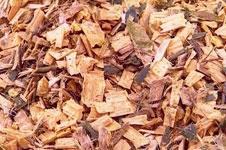Air quality requirements could threaten renewable targets for big cities, a scientific report warns
A new study has highlighted the dangers of the rollout of large scale biomass systems across London, claiming they lead to a sharp rise in poisonous fumes.
The report, commissioned by the London Councils (LC), predicts a sharp rise in poisonous nitrogen dioxide (N2O) smoke particulates and other air pollutants when wood chip biomass are specified in power generation.
With NO2 levels already high in London, even a small increase in wood burning would cause problems, the report found - road side sites are particularly vulnerable, the report claims. Such fumes would clash with legally binding air quality requirements and threatens plans to use biomass on large scales in new developments.
A spokesman for the LC, said the combination of pressures to reduce CO2 emissions and improve air quality was causing problems. “This study showed how the widespread use of wood fuel to replace gas for heating and power generation across London has the potential to have a significantly detrimental effect on air quality unless measures are taken to prevent this.”
Capital commitment
The Mayor is committed to cutting emissions of carbon dioxide by 25% by 2020 and to moving a quarter of energy supplies off the grid to local supplies by 2025. He wants the majority of London’s energy being supplied in this way by 2050. The Mayor’s 2007 Energy Plan mentions that 106,000 tonnes of wood waste could be recovered for fuel.But a source close to the issue said that there was concern about the findings at all levels of Government. “The GLA and Defra are both keen to find ways around it. They are going back to rethink what they are saying in their policy statements,” an expert told ��ɫ����TV.
The LC study modelled the potential cumulative impact of widespread wood-fuelled biomass use across London and concluded that an increase would drive up air pollution across the Capital. The problem might be mimicked in other urban areas of the country. The UK Government has a legal responsibility to meet EU air quality objectives.
Biomass concerm
An expert source close to London’s City Hall said that the GLA was also worried about where all the wood biomass would come from. “The GLA are getting very nervous about biomass CHP in particular,” said an expert source close to City Hall. “They are concerned about supply chains,” he said.The expert source said that biomass would have to make up a slice of any viable renewable strategy. “It is unlikely you could meet these targets ruling out biomass completely, although it does not seem that the GLA’s energy team are hoping to use biomass as the biggest slug of it.”
Nationally, a recent Defra report into biomass proposed a 40% capital grant for biomass boiler or CHP equipment and the ��ɫ����TV Schools for the Future programme stated that biomass boilers be installed where appropriate in new schools buildings and refurbishments.
“It is clear that we need to think more carefully about planning guidance on renewable energy, and London Councils is now working to develop and define best practice for London to avoid any negative impacts on the capital’s quality,” the LC spokesman added.
But with the jury out on turbines and PVs remaining expensive and inefficient, the number of alternatives is dwindling. ��ɫ����TV understands that the GLA and Defra are poised to meet with representatives from the LCs to discuss the issue further.





























1 Readers' comment